Morrison’s Rogue Wilderness Adventures & Lodge has catered to fly fishing anglers in the pursuit of steelhead since the lodge was built in 1946. The Rogue River is one of three rivers in the United States with half pounder steelhead, and Morrison’s is the only Orvis endorsed lodge in Oregon. Our guides are experts in their fields and proficient in many techniques — from the famous Rogue River twitch to double hand spey casting. Whether you’re an experienced angler or fishing for the first time, our team will make it a memorable experience.
FLY FISHING
SINGLE HAND
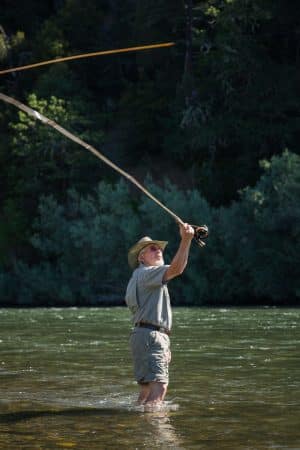
Single hand casting focuses on using a back cast to load the rod and is where most people learn the basics of casting with a fly rod. Single hand casting is effective when fishing for almost any species, including steelhead, salmon and trout.
For single hand casting, anglers can utilize wet and dry flies. During Morrison’s fishing trips, you can use a single hand rod to cast for steelhead while wading from the water or sitting inside the boat. Whichever method you choose, our guides can offer advice and ensure you have a pleasant experience. Our guides advise anglers use a 6 or 7 weight rod.
If you are new to, or curious about, single hand fishing, our expert guides will show you the ropes and have you perfecting your technique in no time.
SPEY CASTING
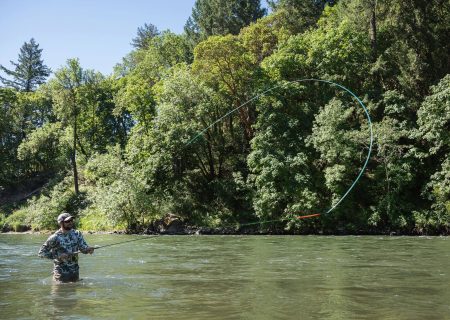
Spey casting is a fly fishing technique which originated on the River Spey in Scotland in the mid-1800s.
Spey casting can be accomplished with a normal length fly rod, or a double-handed fly rod, often called a Spey rod. Morrison’s recommends a 12’6” sized spey rod. You can also use spey rods for standard overhead casting.
Spey casting is used when anglers fish in large rivers for salmon, trout and steelhead. The spey technique is useful when an angler needs to cast larger flies long distances.
The two-handed technique allows an angler to have powerful casts and avoid obstacles, such as trees, by keeping the line in front of their body. Additionally, spey casting is less cumbersome on the shoulders because you’re using two hands. Spey casting is only done while wading in the water, and never from a boat.
NYMPHING
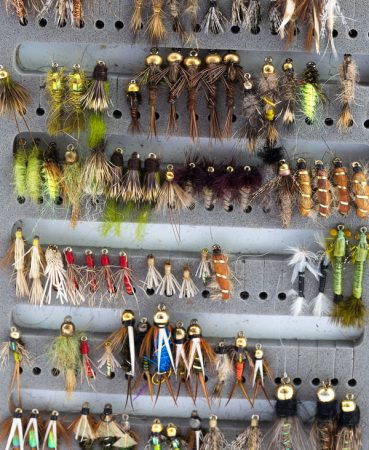
Nymphing uses artificial flies that imitate aquatic insects in their juvenile and larval states, or other aquatic life forms including worms and crustaceans. Why does this matter? Because nymphs are trout food! Some anglers even believe that nymphing is more effective than any other type of fly fishing.
With nymphing, you have a bobber, nymph or indicator that’s on the line with two flies underneath. Once you cast, let it float on the water while the line remains underneath. If the bobber goes under, this shows you have a catch. Nymphing is only done from a boat.
Nymphs live in the waters of lakes and rivers, where trout snack on them. If you use nymphs, it’s important to know what types of natural nymphs trout eat so you can match your artificial ones as closely as possible.
Nymph fishing is something every trout angler should master. If consistent dry fly or streamer fishing isn’t available, there are always insects for fish to feed on that you could imitate with a nymph.
ROGUE RIVER TWITCH
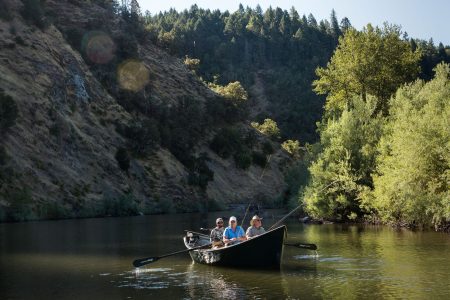
“The Rogue River twitch” is a simple, introductory style of fishing. Everything is done from inside the boat and you do not have to cast. Our guides will move the boat back and forth to get your line moving, while guests twitch the line to make the fly jump.
To understand the technique of twitching, think about how fish act in nature. An injured bait fish swims erratically through the water, which attracts predators. Twitching emulates this behavior on the fishing line.
A twitching fly suggests an easy meal for a predator fish, making it more likely they will be attracted to your line and end up a successful catch.
There are varying opinions about which flies create the best result for twitching, At Morrisons, we use traditional wet flies on sinking lines.
The Rogue River twitch technique is meant to get the fishes’ attention and increase your chance of catching a fish. Morrisons recommends using a 6 or 7 weight rod with a sink tip. We’re always fishing traditional wet flies when twitching.
CONVENTIONAL FISHING
PULLING PLUGS
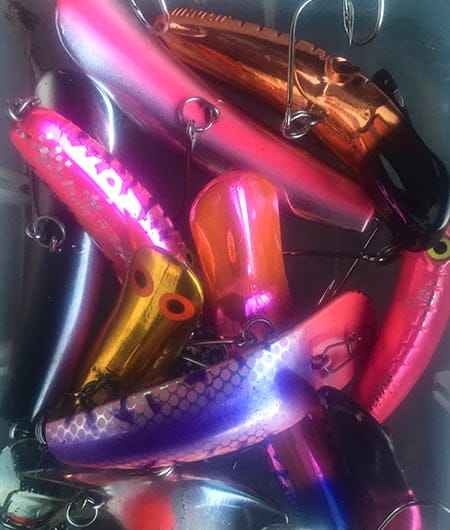
Known by numerous names, pulling plugs has been around for years and used by many anglers. Pulling plugs is a technique which uses a large lure that anglers place on spinning or fly rods. It’s similar to twitching. Anglers sit in the front of the boat and let the line out while our guides move the boat. This attracts the fish.
Most plugs have their “action” built in by design, but experienced anglers pay attention to the nuances of the plug’s action, such as changing the speed or occasionally “twitching” the rod tip during retrieval. Plugs are often cast so they land next to places where fish may be hiding.
Usually, any plug design will work because the fish is attracted to a small object moving or falling through the water, whether due to anger, hunger, territorial protection or curiosity.
SIDE DRIFTING
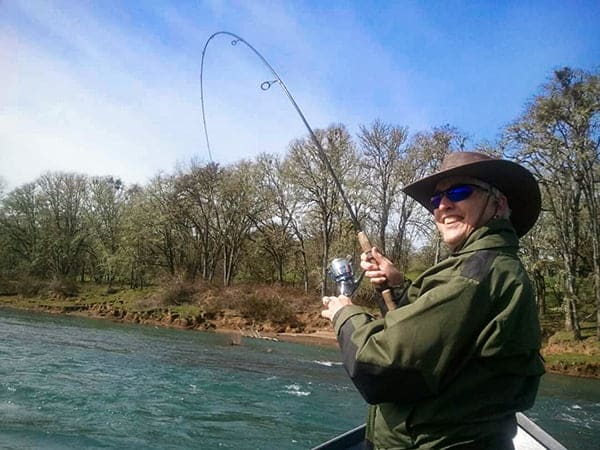
Side drifting is one of the most popular angling methods used for salmon and steelhead fishing on the West Coast. This technique is done from inside a drift boat, where anglers use a spinning rod and a sinker (weight) and a baited hook, which includes salmon eggs, nightcrawler or scented yarn ball. First, the angler casts the line out to the side of the boat. As the boat drifts slowly down stream, the sinker and bait bounce off the bottom, hopefully resulting in a catch.
The side drifting technique first became popular on the upper Sacramento River. Side drifting is similar to standard drift fishing, except the drift is extended the full length of each run by use of the boat. Anglers and their guide must fish in a coordinated manner for this method to be effective.
BACK BOUNCING BAIT
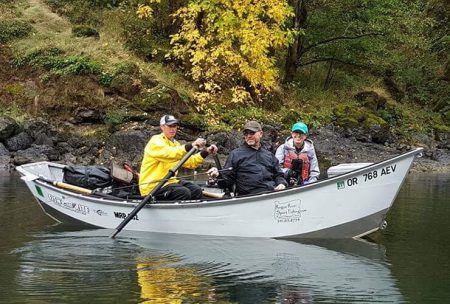
This is the same rod set up as side drifting. The primary difference is that the angler casts directly upstream as the guide slowly pulls the boat downstream, bouncing the bait along the bottom behind the boat. Often, the same area will be fished multiple times, either side drifting or back bouncing; this is accomplished by the guide rowing upstream and making multiple passes and giving anglers a better chance at a catch.
